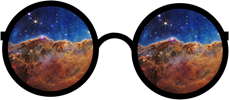Cheiro comes from the Greek word Kheir, and from the Latin chiro meaning hand.
Cheironomy is the analysis of a person’s character by examining the shape of their hand.
Chiromancy is the ability to interpret the meaning of the lines on a person’s palm.
Palmistry has been practiced in many different cultures. Palmistry has strong roots in Eurasia documents regarding the practice of palmistry have been found in India, China, and Tibet.
In ancient Greece, Aristotle (384-322 B.C.E) is reputed to have discovered a treatise on palmistry at the altar of the god Hermes and then presented it to Alexander the Great (356-323 B.C.E). Both Alexander and the Roman emperor, Julius Caesar used palmistry to judge the character of their soldiers. Greek physicians Hypocrites and Galen (AD 130-200) both used palmistry as a clinical aid when examining and treating their patients.
In the Renaissance, palmistry was one of the seven forbidden arts banned by the Catholic Church. Several Popes issued papal edicts against forms of divination including the reading of palms.
In the 19th century, Chiromancy became popularized by world-renowned Chiromancers, William Benham and Count Louis Hamon (aka Chiero). American, Edgar de Valcount- Vermont founded the American Chironogical Society in 1897 and Katherine St. Hill founded The Chirological Society of Great Britain in 1889 to advance and de-stigmatize the art of palmistry and to prevent charlatans from defrauding the public.
Cheiro, (pronounced K’i-ro) an Irish astrologer and occultist published his first book about palmistry at the age of 13 and authored many books on occult subjects. Chiero read and collected the hand impressions of more than 60,000 people. Cheiro read the palms of many famous people including politicians, artists, and royalty. The writer, humorist, and lecturer, Mark Twain said after having Cheiro rad his palm, “Cheiro has exposed my character to me with humiliating accuracy. I ought not to confess this accuracy, still, I am moved to do so.”
As a teenager, I found that I had a natural affinity for reading palms. Every palm has unique features and is a roadmap showing an individual’s personality, behaviors, and habits. Hands provide information about a person by size, shape, length, or width. Palm lines can be long or short, and have crosses, or breaks, each minute detail provides a snapshot of traits and characteristics unique to the hand being read.
Sources:
Cheiro, “You and Your Hand.” Revised Owen, Louisa, Sphere Books Limited,1974
Cheiro, “Cheiro’s Palmistry for All. The Classic of Palmistry.” (6th ed.) Arco Publishing, INC., 1982

